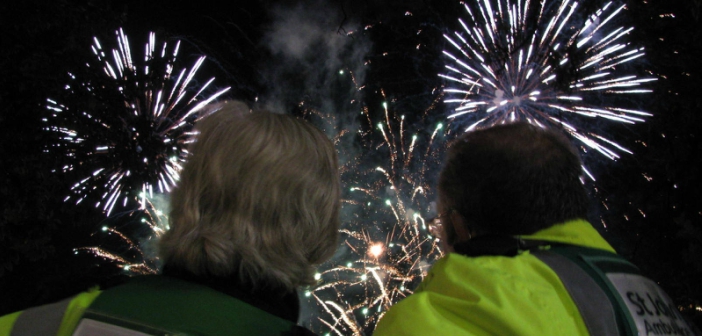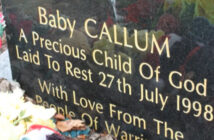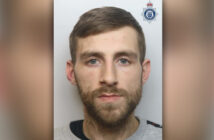Leading first aid charity St John Ambulance is urging everyone to learn some basic first aid skills ahead of the Bonfire Night celebrations.
St John Ambulance volunteers will be attending almost 100 firework events across the North West so that anyone who needs first aid gets it quickly.
However, injuries are much more likely to occur at private parties, where trained volunteers won’t be on hand to help.
Every year, around 1,000 people will visit A&E for treatment of a firework-related injury in the four weeks around the 5 November*. But with some basic first aid skills, everyone can be prepared to help in a firework first aid emergency.
Ben Savage, Regional Events Manager said: “St John Ambulance is keen that people enjoy Bonfire Night but don’t end their celebrations in hospital.
“Fireworks and bonfires can provide fun and entertainment for families at a time of year when the evenings are rather dark and gloomy. They literally light up the sky.
“Our volunteers will be on hand to provide expert first aid assistance at public displays across the region but if you are organising a private event, you need to know what to do if there is a first aid emergency.
“For example, if someone suffers a burn injury, it’s important to take immediate action to prevent them from going into shock or suffering long-term damage.
“The most common injuries that our volunteers are required to treat at Bonfire Night gatherings are burns, e.g. from fireworks, fire or sparklers; debris in the eye from bonfires and fireworks and smoke inhalation.”
Burns or scalds
If someone’s got a burn or scald:
- Run it under cold water for at least 10 minutes. You need to completely cool their skin to prevent pain, scarring or further damage
- If the burn is on a child, or if you think it’s a serious burn (for example, if it’s deep, larger than the size of their hand, or on the face, hands or feet) call 999/112 for an ambulance
- Remove any jewellery or clothing near the burn (unless they’re stuck to it)
- Don’t pop any blisters or apply creams – this can make it worse
- Once cooled, cover the burn with cling film or a plastic bag
- If necessary, treat them for shock, by laying them down with their legs raised and supported above the level of their heart
Debris in the eye
If someone’s got something in their eye:
- Tell them not to rub it, so they don’t make it worse
- Pour clean water over their eye to wash out what’s in there and/or to cool the burn
- If this doesn’t work, try to lift the debris out with a damp corner of a clean tissue
- If this doesn’t work either, don’t touch anything that’s stuck in their eye – cover it with a clean dressing or non-fluffy material
- Then take or send them straight to hospital
Smoke inhalation
If someone’s inhaled smoke fumes:
- Move them away from the smoke so they can breathe in some fresh air
- Help them sit down in a comfortable position and loosen any tight clothing around their neck to help them breathe normally.
- If they don’t recover quickly, call 999/112 for an ambulance.
For first aid information, visit www.sja.org.uk for more first aid tips. People can also download the free St John Ambulance first aid app (available for iPhone and Android devices).




